
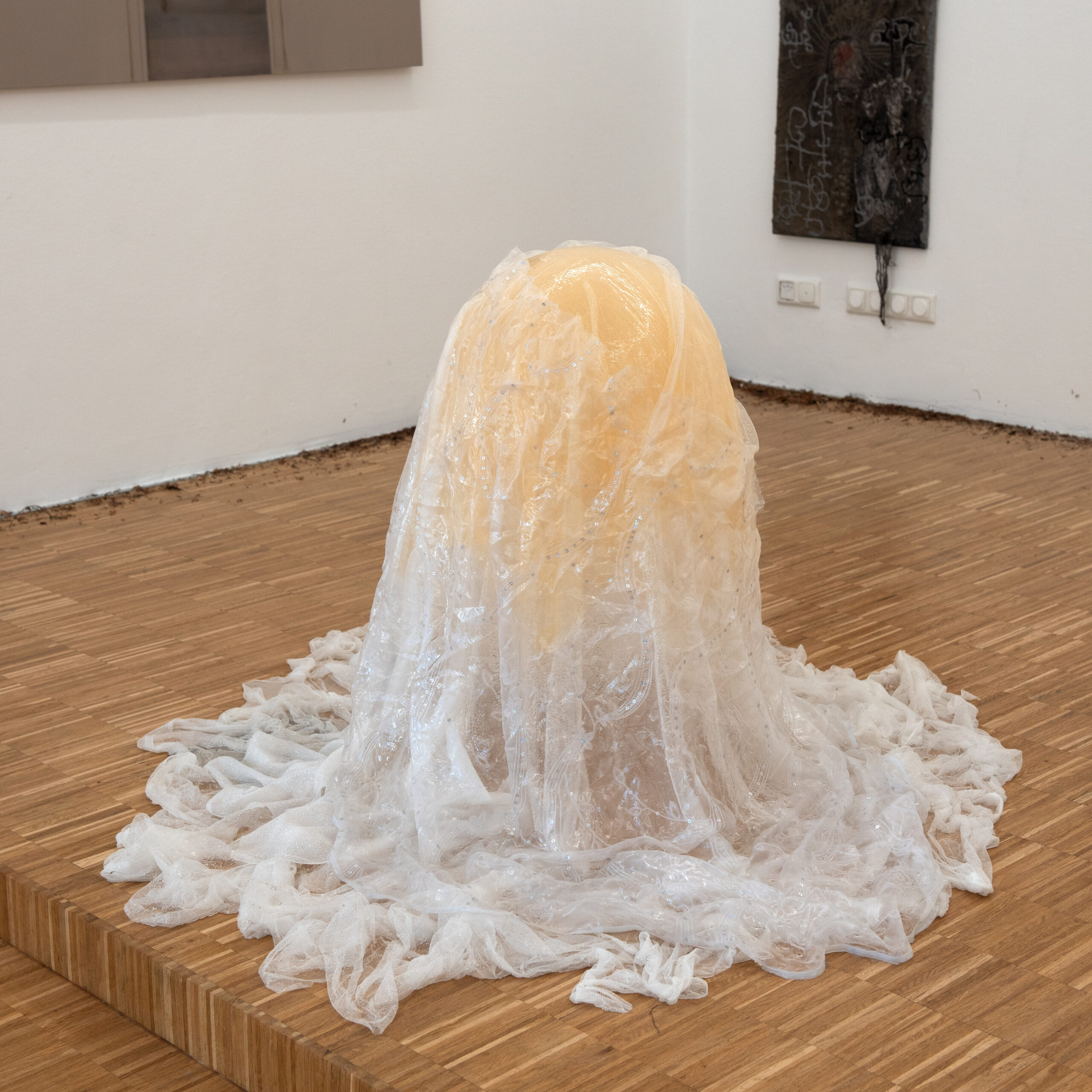
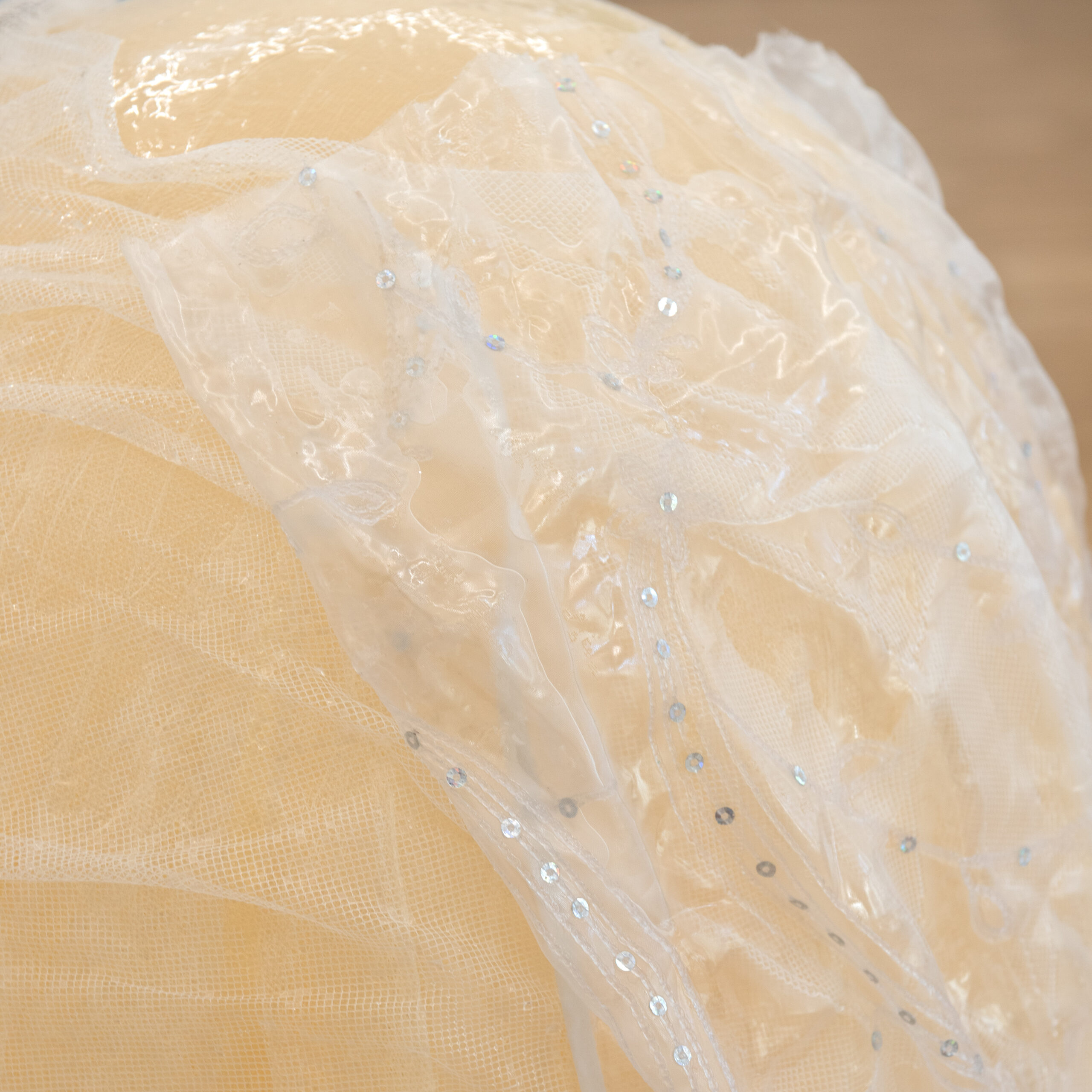




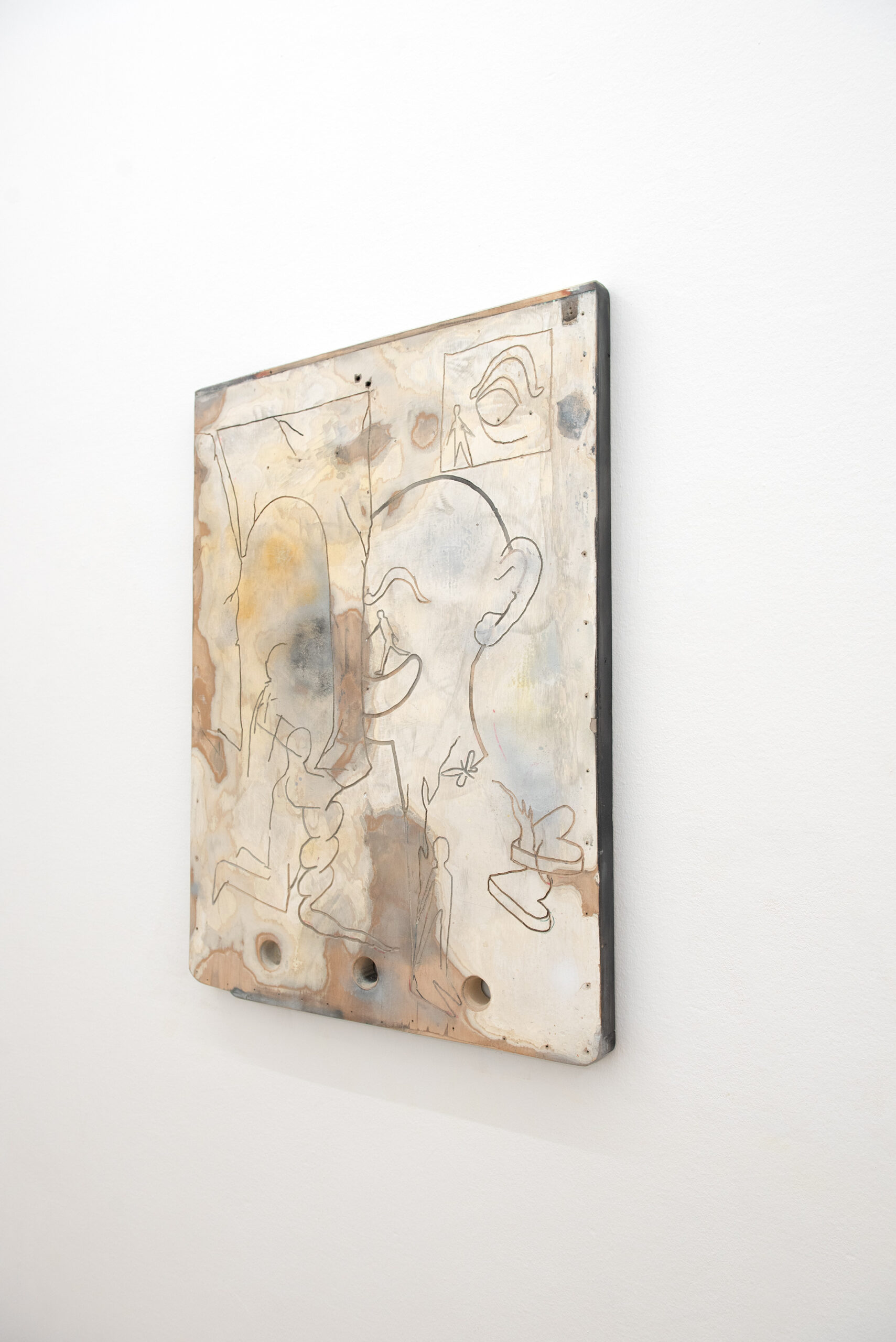
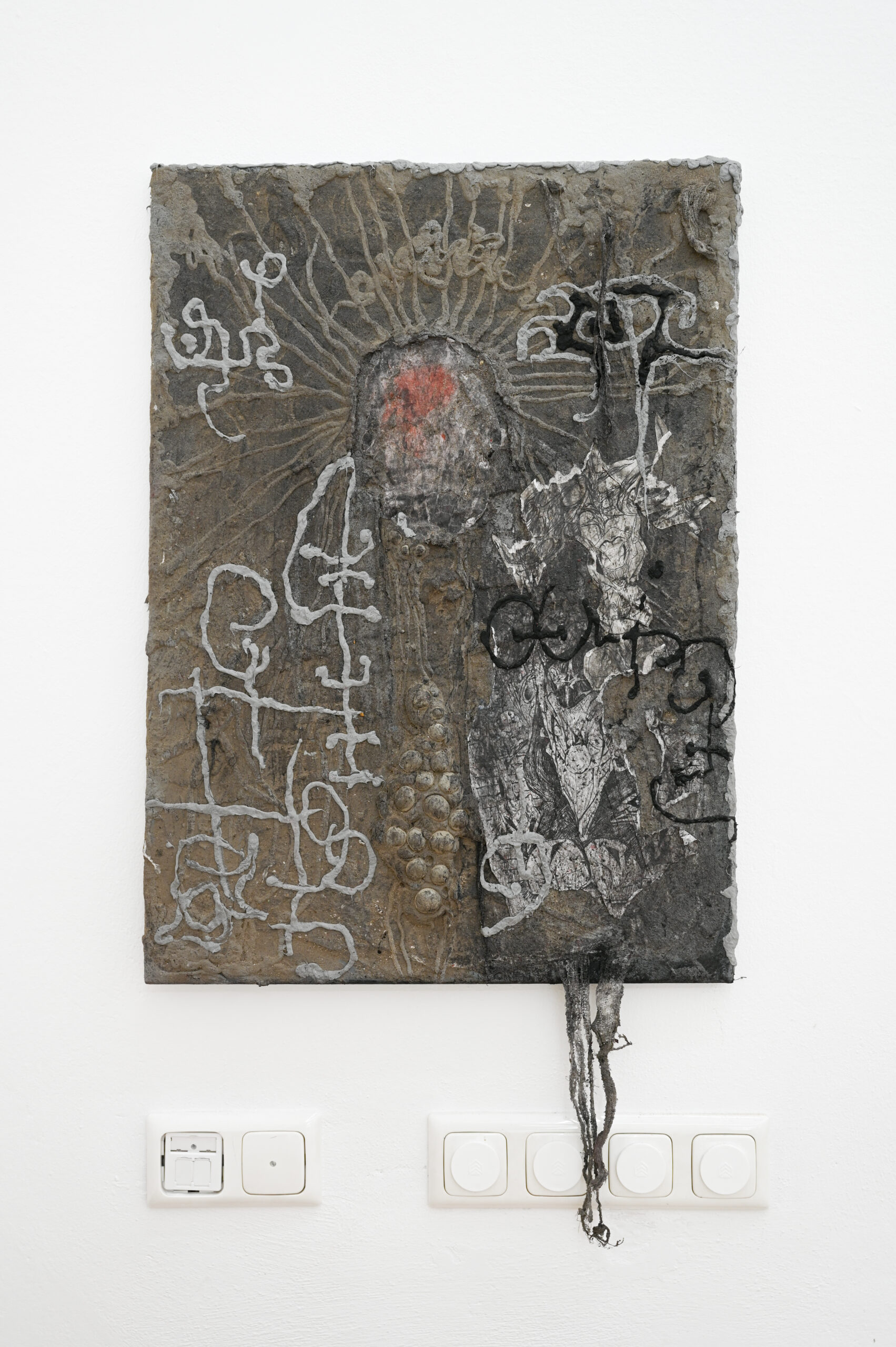

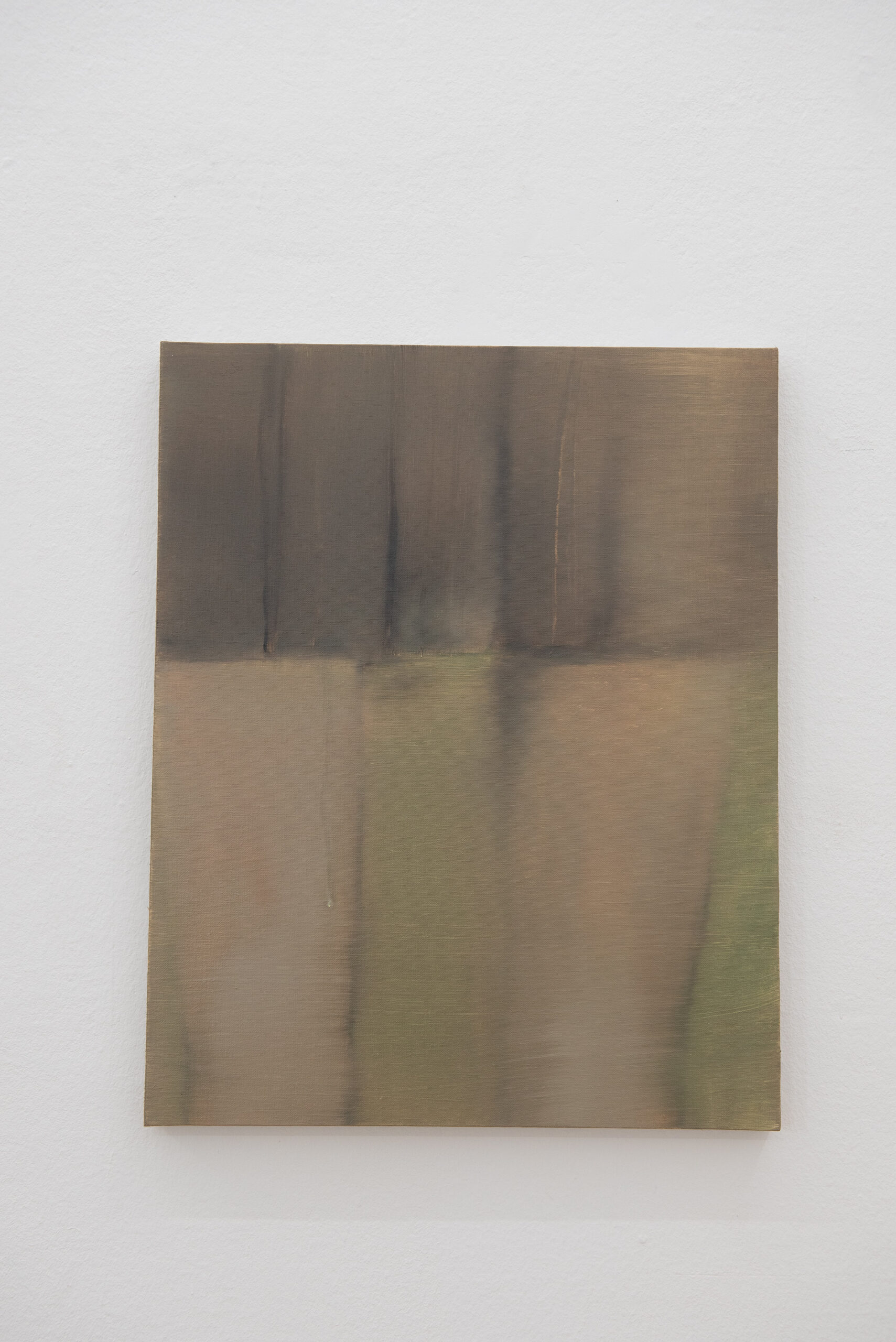

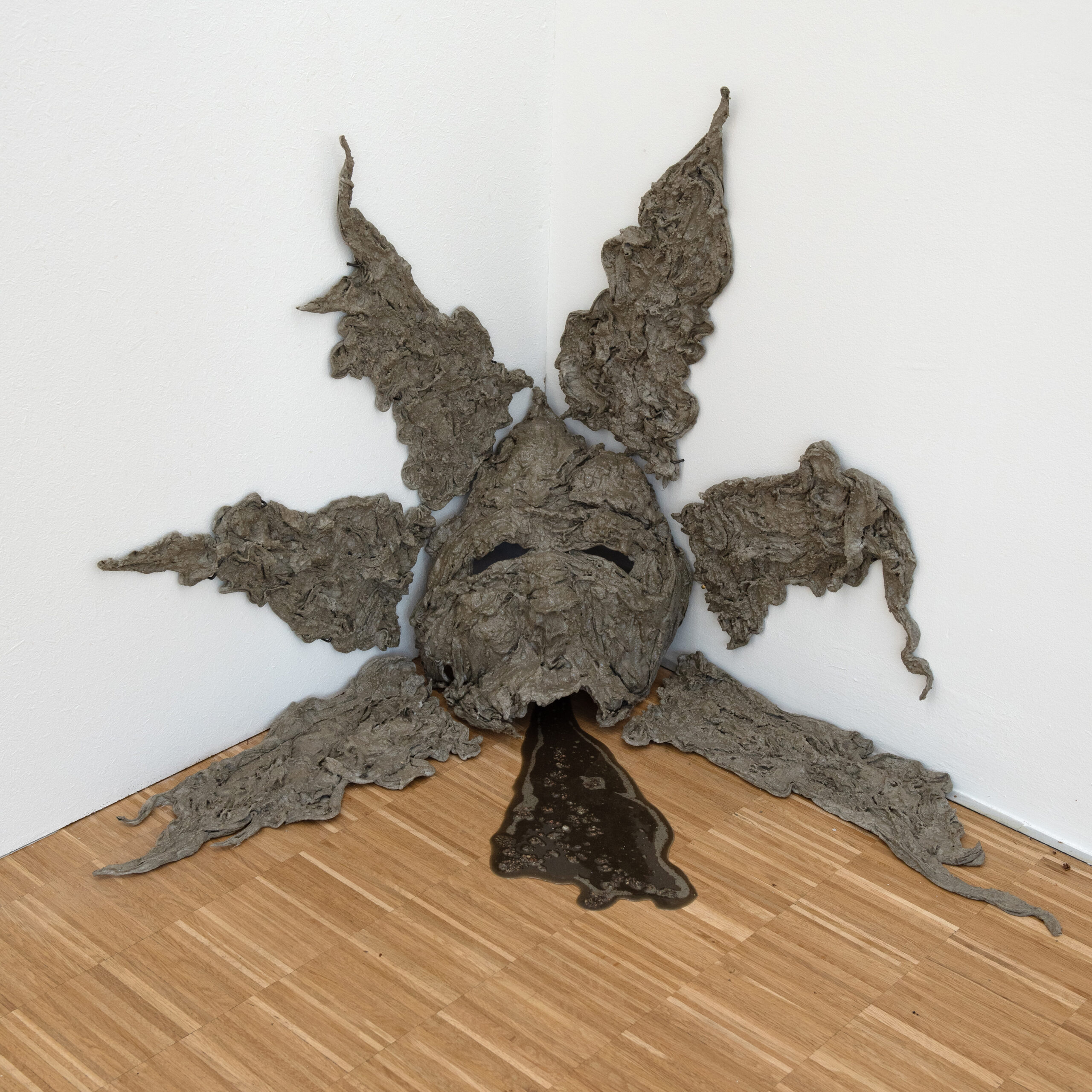
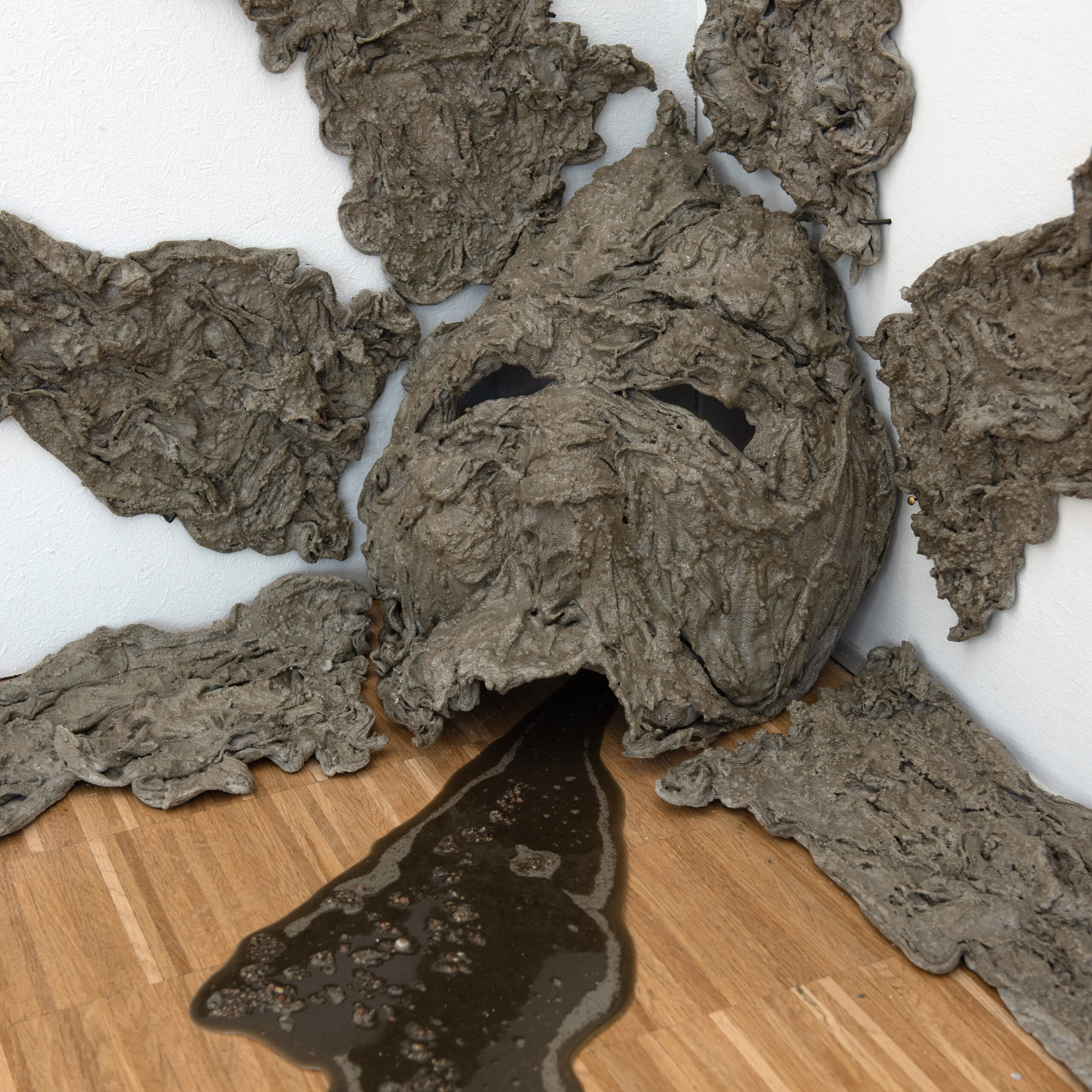
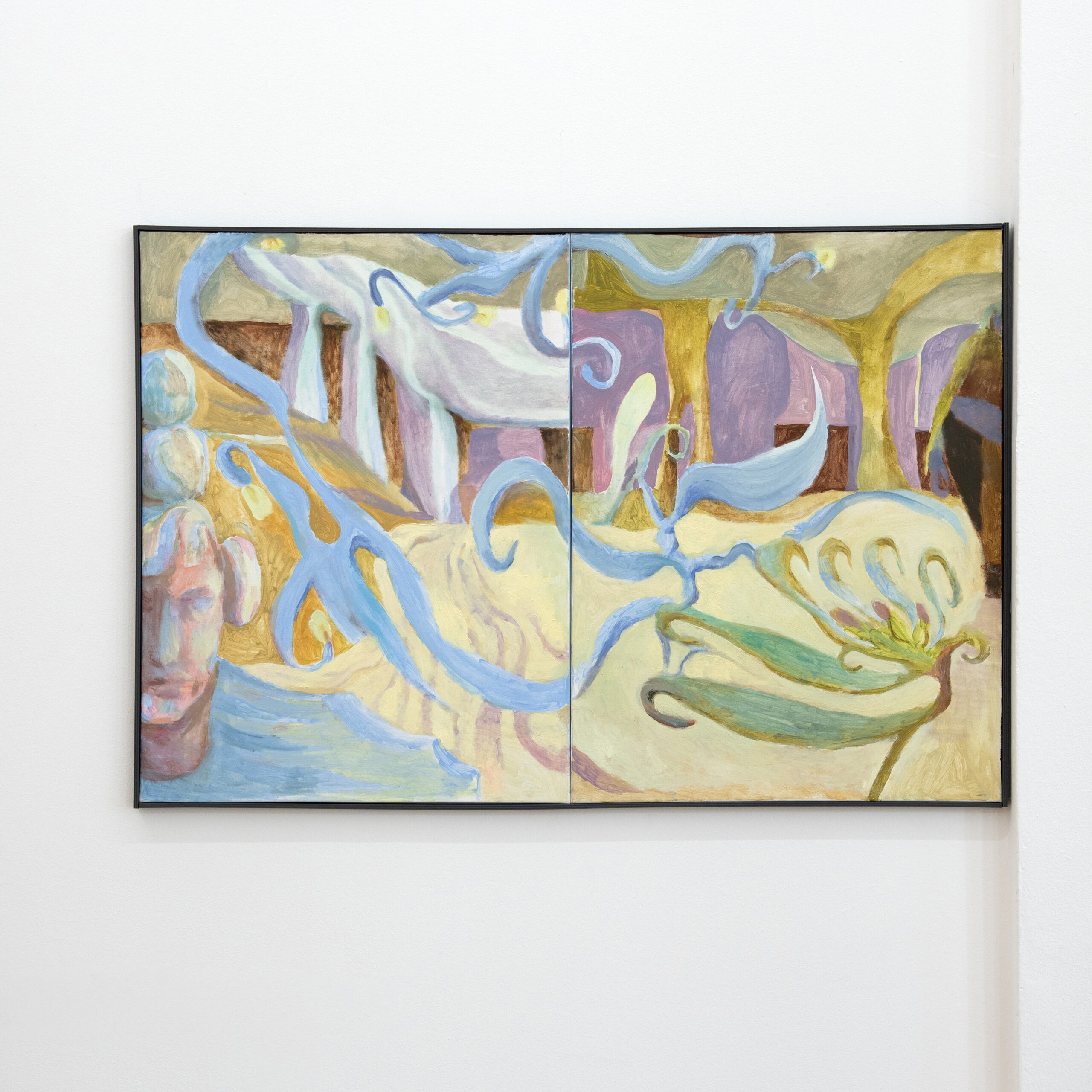
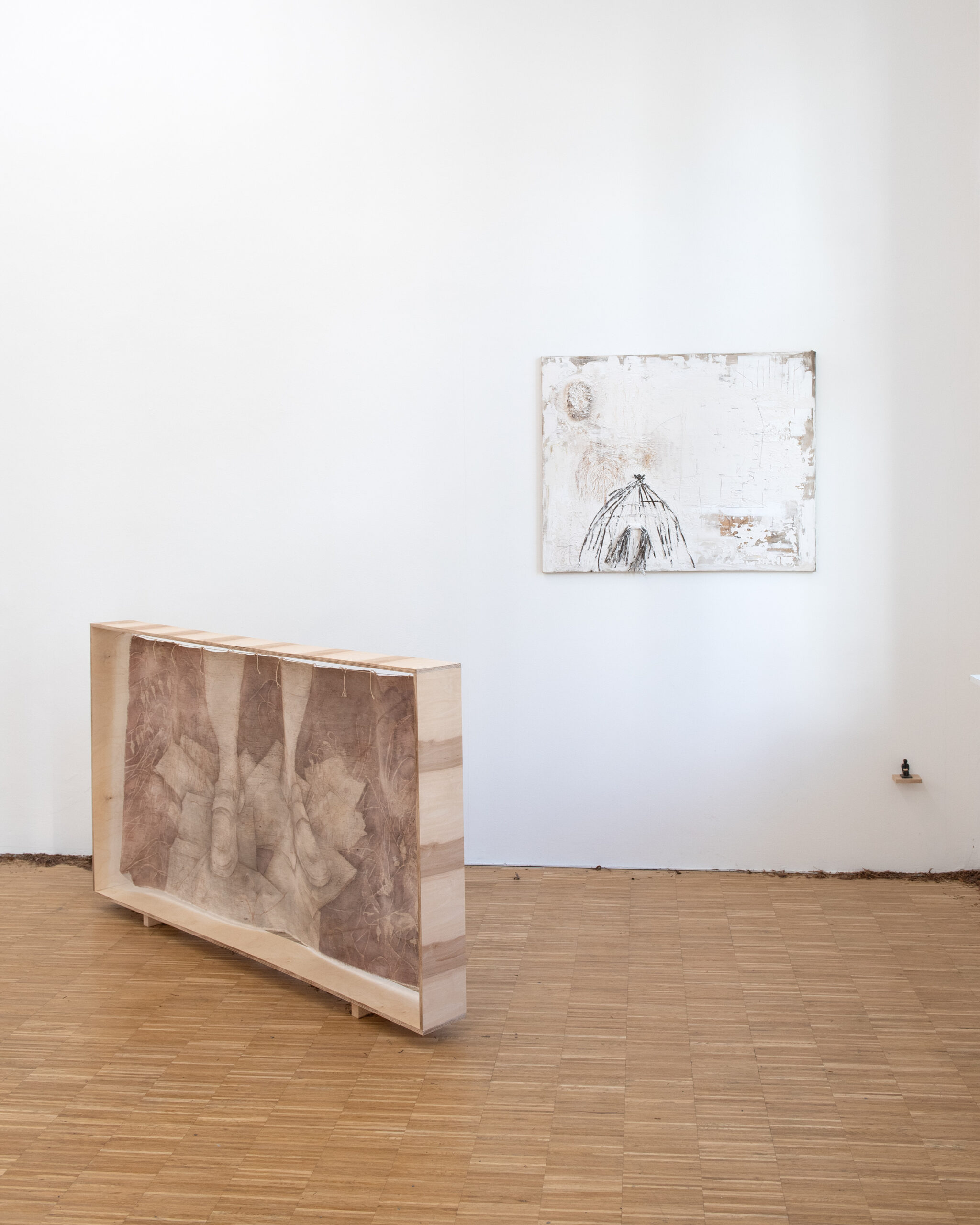
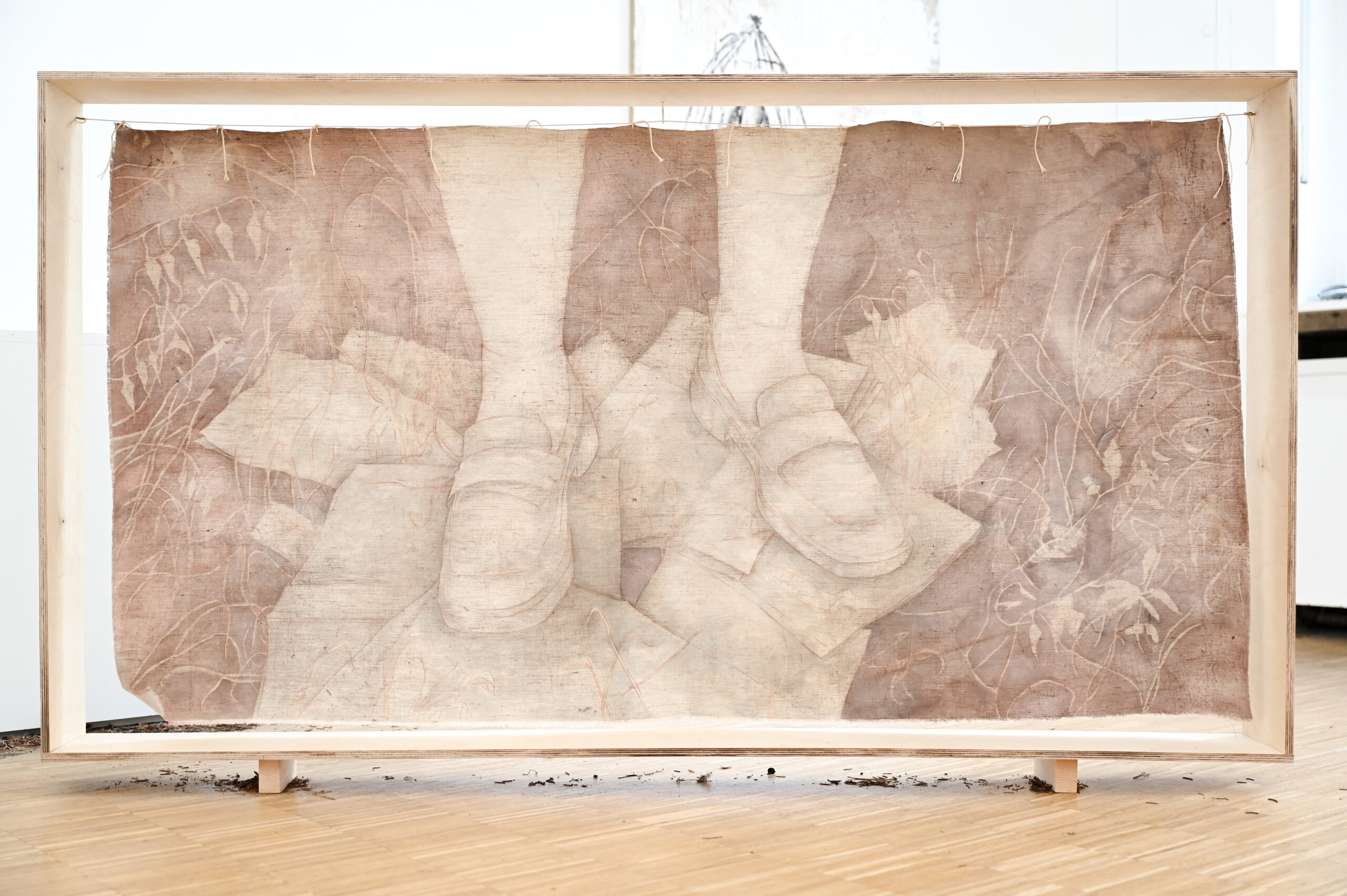
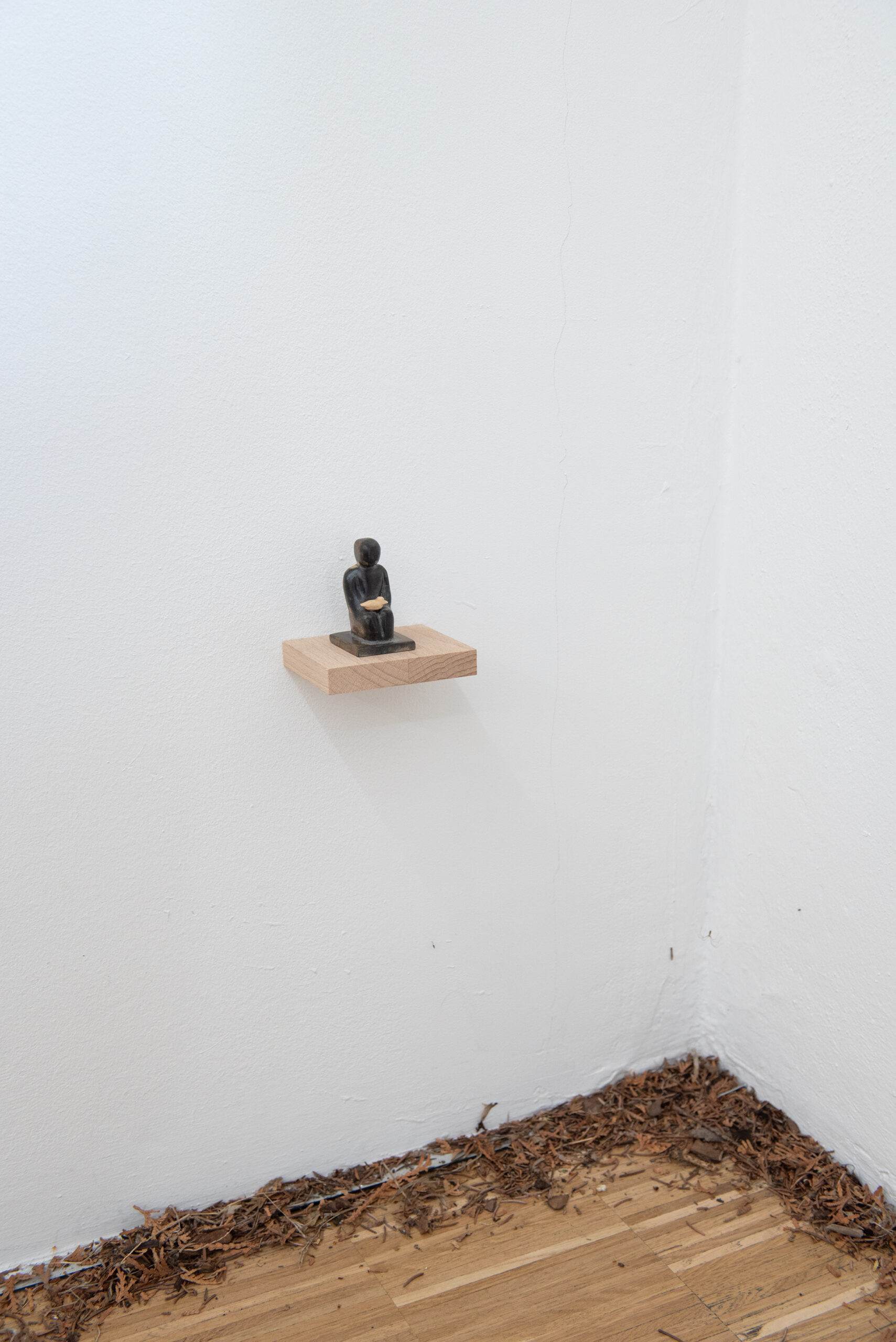


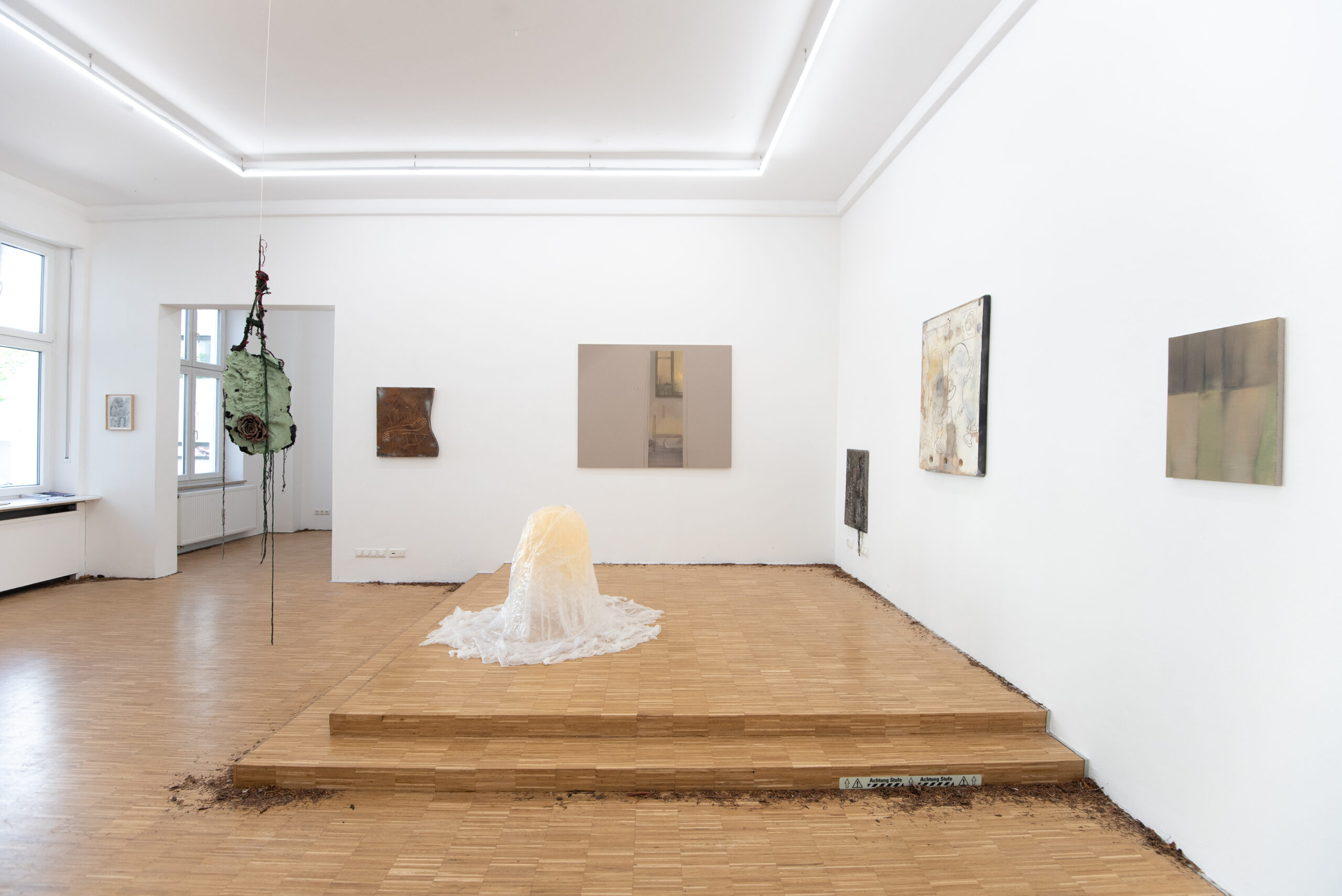

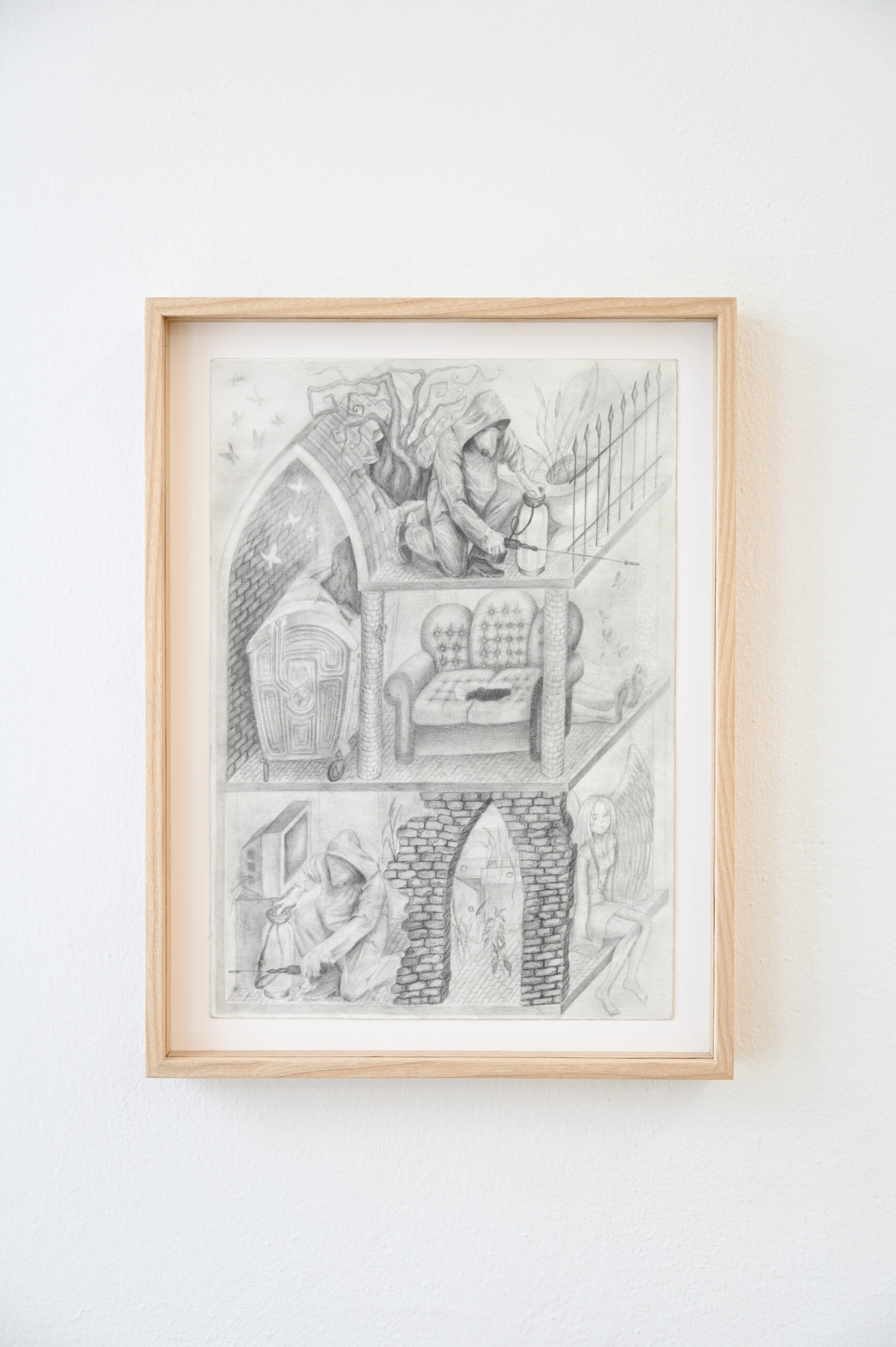
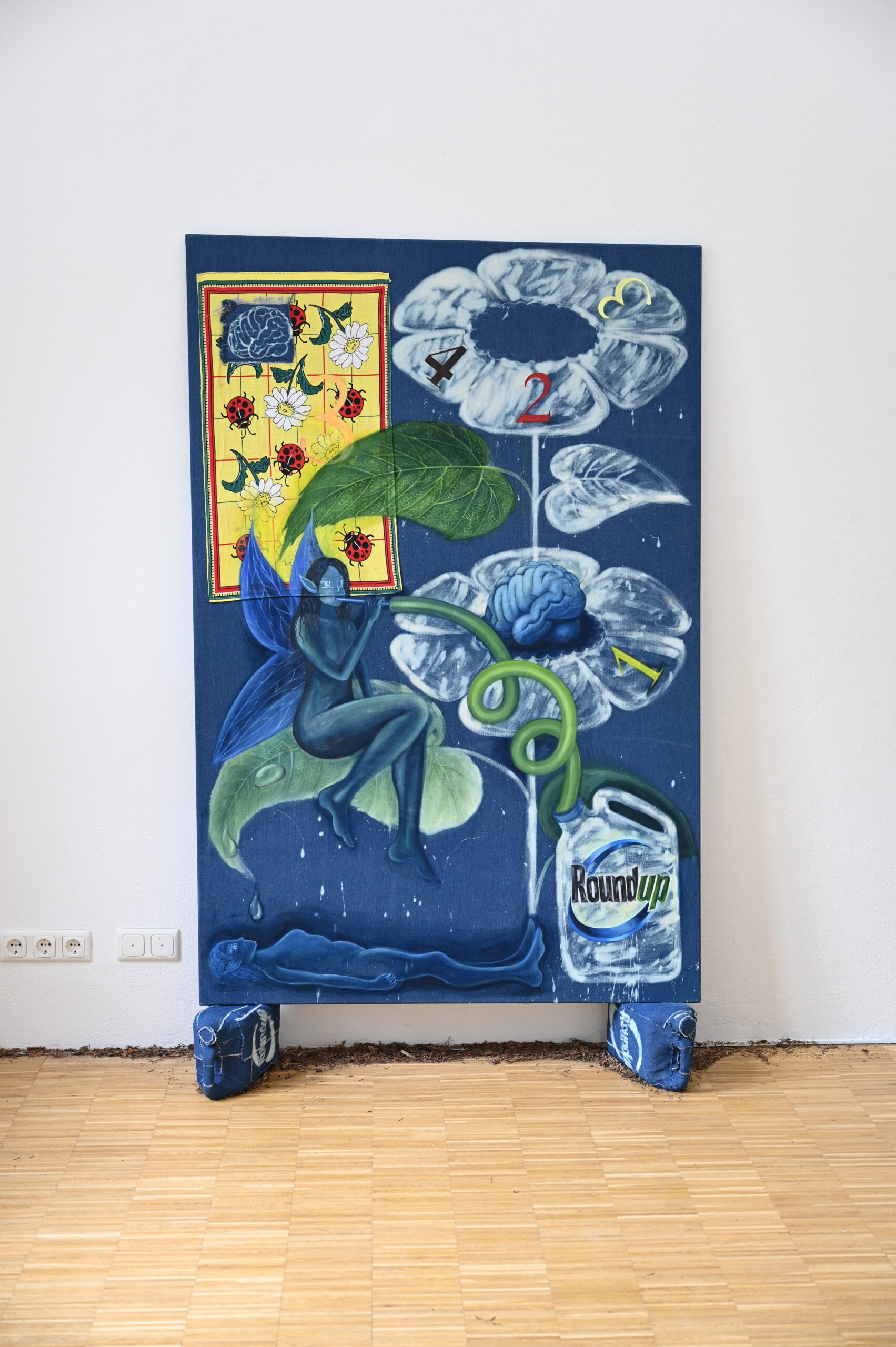


Poztopy / Thaw
Jestem już na to za stara – I am too old for this. I still remember when everything changed. It was the little things that I noticed at first. At the beginning there was only one or two vegetable stands close to the tram stop across the street. They were soon joined by others selling second hand clothes from the west. Advent calendars followed with real chocolate inside (!) – then a baker – then a stand with underwear and nylon stockings and slippers with elastic bands. Dynasty was on TVP after the news each Sunday at a quarter past eight and a chewing gum cost 1.000 zloty. The next week it was 1.500 zloty. 100.000 zloty was a Christmas gift from my grandmother and I was told to spend this quickly. When I visit Poland, which is not at all often, these are the memories I carry with me and their images of the past always shape how I see the place where my parents live now.
Most of the artists in the exhibition “Roztopy” curated by Przemek Sowinski and hosted by the Tiger Room were born much later, in the late 90s, and they are not burdened with these particular recollections. When Przemek writes of the “thaw” this is what he means. I admit that initially I misunderstood. I assumed the period of transition that the exhibition refers to was the historical transition from one political system to the next. I guess I really am too old for this – I am too late. In 1990, as a ten year old child I only witnessed the beginnings of a transition. But it is this transition time, which is now perhaps coming to an end, melting away as it were, like old winter’s snow. And in the green-tinted light we can see the dirt that has been left behind. Spring is here at last – a sun is rising in Dominika Olszowy’s work! It is also there in the small drawing by Paweł Marcinek, outside his block of flats, on an advertising banner. Yet in the painting by Karolina Szwed, spring is a girl’s short skirt, a drop of liquid like a tear, tricking down her bare thigh. In the work by Klaudia Figura another girl stomps on her schoolwork with clumpy shoes. So vomit spews from the second sun by Olszowy setting in the corner of the gallery space – and from the wooden sick house by Paweł Marcinek hanging in the other corner. Two arms embrace it from behind, whether to comfort it in its distress or to stop it from chocking, we cannot tell. In a small drawing by Maryna Sakowska, a gothic, multi-story dwelling is being disinfected by men in biohazard suits, after a grandmother was found lying dead behind the stained sofa. Whereas, the dwelling in Zuza Piekoszewska’s piece is one made for insects to crawl in.
There are other memories present here as well, but these refer to a past I do not share because it was an impossible future for me, the turn of the century when everything was supposed to get better, cooler somehow. Czaro Malinkiewicz’s heavily textured reliefs of silicon and paste and dirt, refer to splatter film gore and manga comics and more references to manga are also present in Sakowska’s work. Whereas we in the early 90s would try to find old copies of Lucky Luke. Przemysław Piniak celebrates this time to come in his video, dancing wildly in front of his grey block of flats while dressed in his most shiny and colourful sports clothes. Julia Woronowicz, who often reinterprets local histories and myths, has also seen the future in her painting, and it looks like Piaseczno! Presiding over this detritus of change is s small kneeling figure, shiny and black holding a duck in its arms. Like Benjamin’s angel, it looks towards us as it is blown to the future.
Magdalena Wiśniowska 2025
Installation views

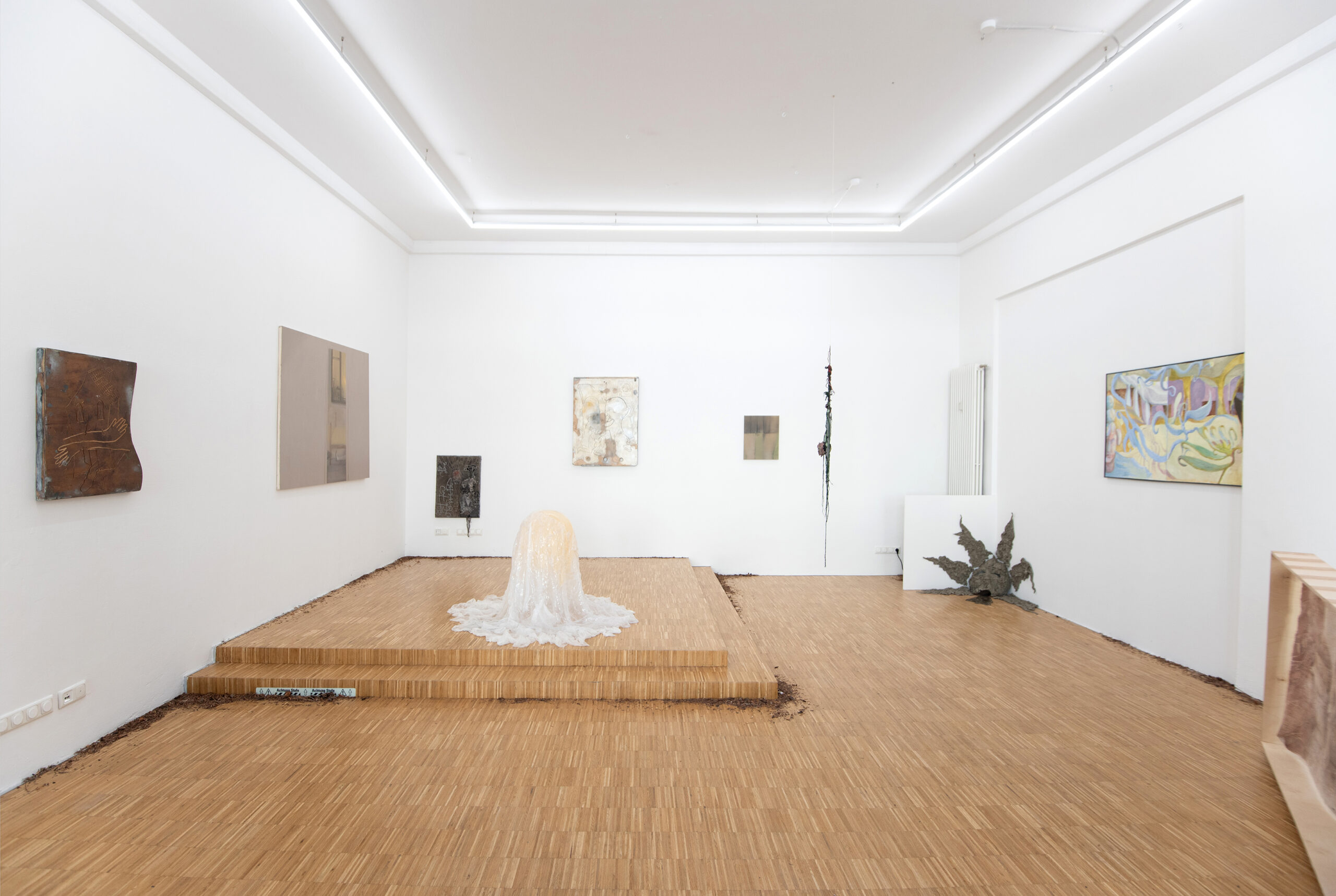

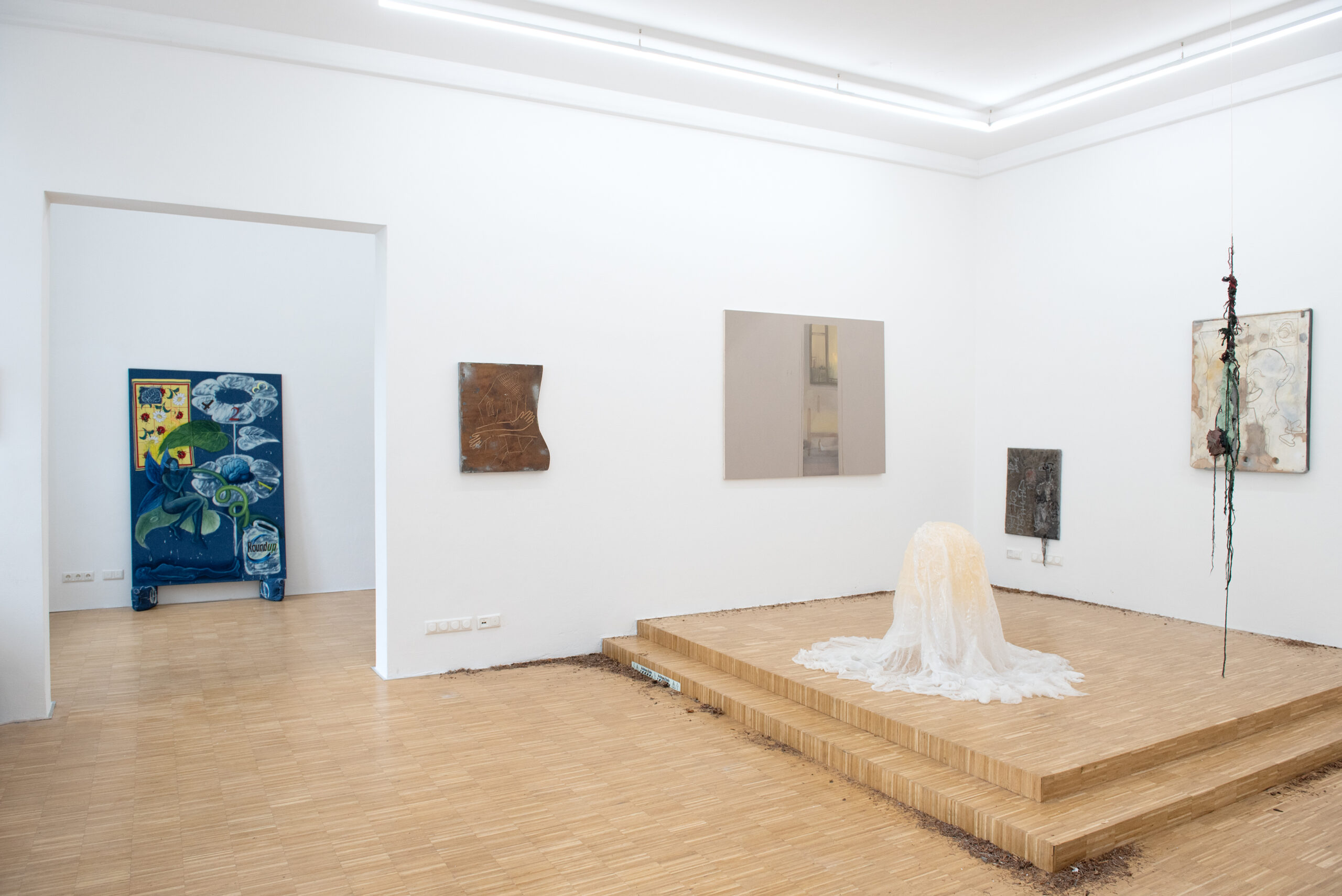

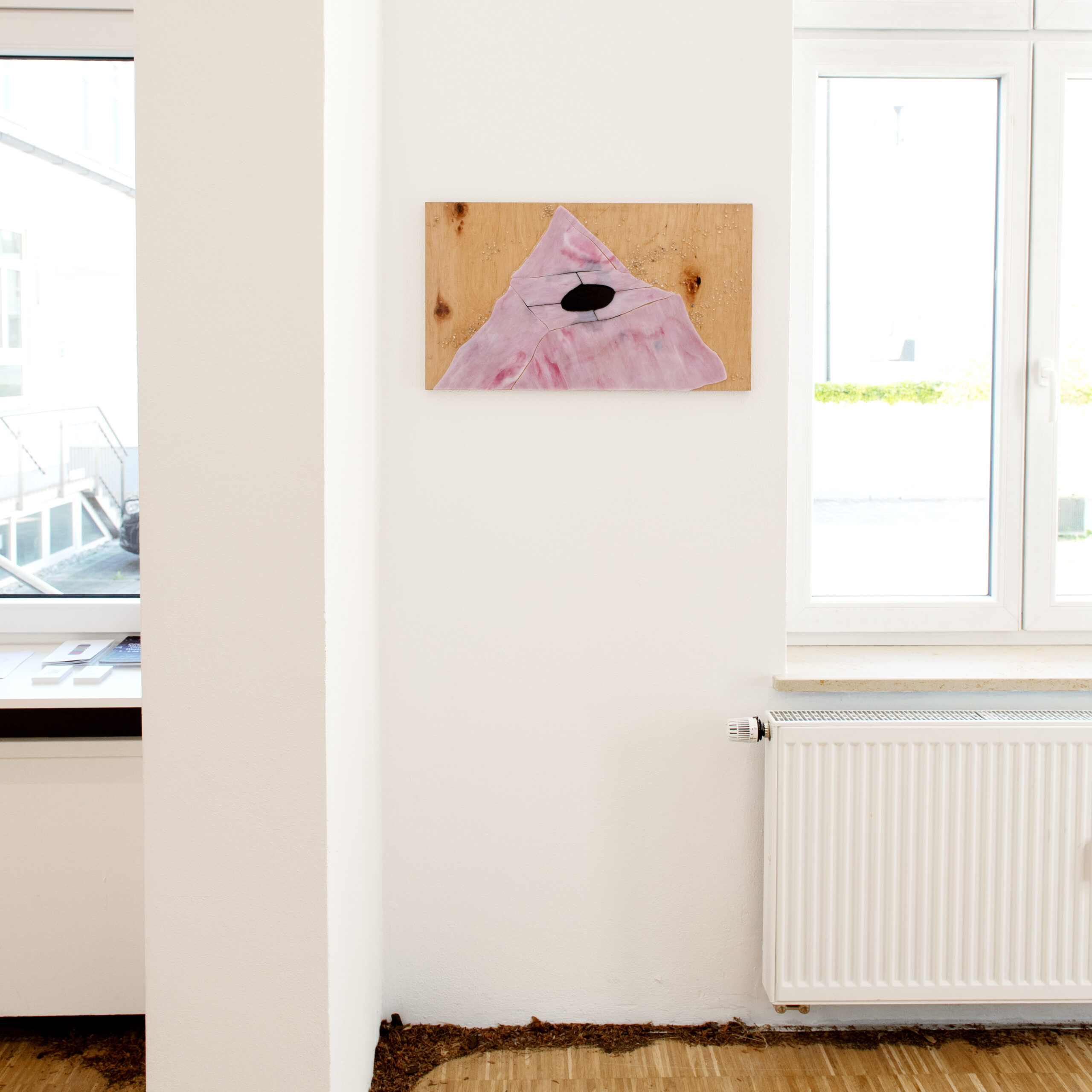
Artists
Dominika Olszowy
Creates works between various media, using video, performance and installation, blending truth and fabrication. Sometimes she treats her works as amulets — conjuring and domesticating a world in crisis. Her practice draws on personal experience, transforming it into universal, subtly humorous reflections on human existence and the passage of time. Since 2008, she has run the ephemeral Sandra Gallery, co-founded the radical hip-hop group Cipedrapskuad and the moped gang Horsefuckers M.C. Occasionally she designs theatre sets. In 2019, she received the „Spojrzenia – Deutsche Bank“ award. Lives and works in Warsaw.
Klaudia Figura (b. 2000)
Primarily works with sculpture and painting, often using inexpensive and accessible materials: ready-mades, air-dry clay, epoxy resin, and “cold porcelain” (a mix of potato starch and white glue). With this humble recipe, she crafts objects and ornaments that mimic costlier materials. She also works with wood, metal, glass, and fabric. Her love for DIY stems from growing up in the countryside and learning traditional crafts. She‘s intrigued by local tales of hauntings, oddities, and natural anomalies. She draws inspiration from the internet, tracking down fringe influencers or new-age witches on TikTok and watching DIY tutorials on resin-wood tabletops. Her works play with the viewer’s perception of what’s real vs. artificial, alive vs. dead.
Julia Woronowicz (b. 1997)
Graduated from the Academy of Fine Arts in Warsaw in 2021. Winner of the top prize in the latest edition of the „Artistic Journey of Hestia“ competition. Her work has been shown at the Museum of Modern Art in Warsaw (several times), Studio Gałązka, PGS, Autonomia gallery, and soon at Zachęta (July) and Lokal_30 (December). She builds an extensive chronicle of Polish mythology, currently focusing on demonology to reclaim childhood stories. Works with fragmentary oral histories, attempting to reconstruct pre-Christian tales. Uses both known mythical figures and those she imagines within pagan Polish beliefs.
Czaro Malinkiewicz (b. 1999)
Graduated in experimental film from the Academy of Art in Szczecin and is currently completing his Media Studies at the University of the Arts in Poznań. Focuses on pop culture, cinema, props, horror history, conspiracy theories, and the role of the internet. Creates sculptural-painterly objects rooted in horror film aesthetics, using these references to deconstruct ideas of „normalcy“ and to question our given reality. His works have been exhibited at Galeria Kronika (Bytom, 2023), Trafostacja (Szczecin, 2022), HaShahar 5 (Tel Aviv, 2022), Galeria Labirynt (Lublin, 2021), and in solo shows at GNWP and Galeria Szczur (Poznań, 2024), Kurzy Młyn and OS 17 (Szczecin, 2023).
Paweł Marcinek (b. 1986)
Graduated from the Eugeniusz Geppert Academy of Fine Arts in Wrocław in 2014 (Painting and Sculpture). Focuses on objects and installation. His works often reference everyday situations in city outskirts, viewed through the lens of change. Frequently uses discarded materials, transforming them into vessels for difficult stories, softened through acceptance and distance. His latest works use an engraving technique with a milling machine. Exhibited at the Gierowski Foundation (Warsaw, 2024), BWA Tarnów, Szaber Gallery (Kraków), Galeria Wy (Łódź), Jak Zapomnieć (Kraków), and Entropia (Wrocław). Participated in Łęctwo‘s 2022 group show The Best Years of Our Lives during Warsaw Gallery Weekend.
Przemysław Piniak (1988-2025)
Graduated in Painting from the University of the Arts in Poznań (2021) and the Academy of Art in Szczecin (2019). Creates futuristic narratives through installations, paintings, and audio works. Explores new forms of communication and urban perception. 2023 resident at CK Zamek. Participated in Studio Mistrzyni with Joanna Rajkowska (BWA Wrocław, 2021), and was awarded at Młode Wilki 2018 for the video performance Pylnice P. His solo exhibitions include Eyes from the Inside of the Head (WGW 2023), Princess Marcin (Poznań, 2023), Demons (Wrocław, 2022), and Fear Makes Mice Drop Their Ears (Poznań, 2021). His works begin with literary forms, combining phrases overheard in public life into poetic, ambiguous streams of consciousness. He uses found objects — rags, plastic bottles, household items — to build campy visual worlds. One of his recurring symbols is the pigeon: ubiquitous, disliked, dirty — a metaphor for queer marginalization. His art queers the city and fights for equality.
Zuza Piekoszewska (b. 1996)
Graduated from the University of the Arts in Poznań and the Academy of Art in Szczecin. Her work has been exhibited at Zachęta (2021), BWA Wrocław (2023), GIG Munich (2022), and Who is Pola / Pola Magnetyczne (2024). Creates objects exploring the link between humans and nature, especially death and decay. Her sculptures, seemingly inert, pulse with a quiet micro-activity — visible only upon close, extended observation. Her works evoke memories and trace energies of the past, generating a strange awareness of one’s own presence. To see emotion in these objects, one must first relinquish their functional associations. Her art exists at the boundary between rationality and uselessness, life and its absence — a meditation on impermanence without finality.
Maryna Sakowska (b. 1992)
Works with painting, drawing, object, and installation. Studied multimedia at the Academy of Art in Szczecin (2019) and painting at the University of the Arts in Poznań (2017). In 2020–21, she was an assistant with Daniel Rycharski’s sculpture studio in Szczecin. Her painting practice is a means of understanding personal emotional states and a laboratory for examining cultural and social phenomena through feminist critique, queer theory, embodiment, and historical narratives. Finalist of the Geppert Competition (2020) and triple finalist of the Artistic Journey of Hestia (2017, 2018, 2019). Participated in the 18th and 19th Survival Art Review.
Karolina Szwed (b. 1997)
Born in Bielsko-Biała. Studied painting at the Academy of Fine Arts in Katowice (2016–2022), graduating under Andrzej Tobis and Dominika Kowynia. Lives and works in Warsaw. Her subtle, impressionistic works address autobiographical themes, focusing on capturing emotions and fleeting moments instead of constructing clear narratives. Inspired by childhood sincerity, the dramatization of everyday emotions, and the transformative power of delicacy. She presents difficult experiences in a way that reveals their underlying beauty. Believes that deeply personal experiences have universal resonance. Influences include psychological horror games, Satoshi Kon‘s anime, and small sentimental objects encountered by chance.